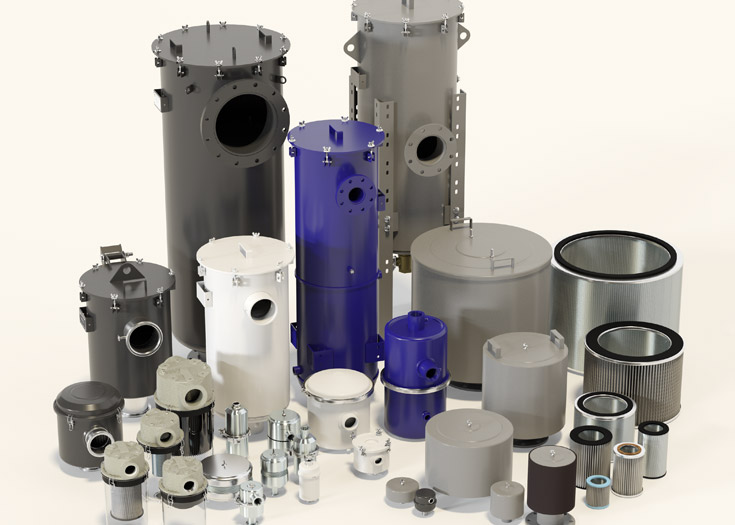
Introduction:
Industrial air and gas filters are a crucial component in process applications. The primary purpose of an industrial filter is to separate and capture contaminants within air or gas streams; however, there are many different types, styles, and features depending on the specific application conditions.
Finding the correct industrial filter is challenging if you are unfamiliar with the factors which impede or improve its performance. When selecting an industrial filter, there are application and process-specific requirements to consider, in addition to relevant design codes and standards.
Below is a comprehensive summary of the most relevant factors to consider when selecting an industrial air or gas filter housing and the internal element.
Operating Conditions for Industrial Filters
The operating conditions will impact a filter’s design, size, efficiency, performance, and service interval. Since process conditions can change over time, it is important to design a filter solution for the most challenging scenario.
Indoor or Outdoor Installation
The location of the process equipment (vacuum pump, blower, or compressor) and the filter itself will dictate the materials of construction and longevity. For example, if a filter is mounted outdoors in a harsh marine environment, 316L stainless steel construction is ideal.
Also, if the filter is exposed to weather conditions such as rain or snow, then proper protection is necessary to prevent ingress to the filter and potential bypass to the equipment.
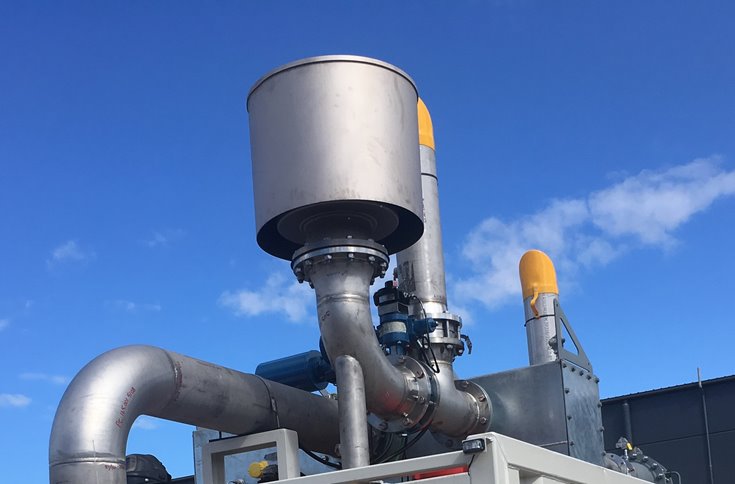
Environment plays a large part in the recommended construction of your filters.
Ambient air quality is also an important factor, as a harsh challenge will lead to a higher service frequency. Equipment and filters installed in harsh ambient environments such as cement manufacturing and mining, require extra protection from the conditions.
Gas/Air Flow Rate
The flow rate of the gas or air stream directly impacts a filter’s size and performance. The connection size of a filter housing and the surface area of the internal filter element is directly determined by the process flow rate. Furthermore, the flow impacts the dust holding capacity and efficiency of the filter.
Studies have determined that when the flow rate is excessive, the dust holding capacity and efficiency will suffer, so this is a critical piece of information for sizing an industrial air or gas filter.
Contaminant Type and Characteristics
Air and gas filter designs vary depending on the contamination type (particles, liquid, vapor). It is important to analyze the process itself plus the operating conditions (pressure/vacuum, temperature, etc.). Together, these will determine the industrial filtration media, separation stages, flow pattern, and filter housing design.
For example, simple dust contamination may only require a polyester filter element, while a heavy liquid challenge may require multiple separation stages (baffle, demister, and final filter element). Any available information regarding the particle size (micron), physical properties, and concentration are factors for consideration.

Ideal for vacuum hold-down applications in the wood routing industry, an ST SpinMeister combo uses a prefilter to remove the coarse wood dust particulate (85% at 15 micron), greatly extending the life of the inline ST, primary filter. The results are longer run times and fewer maintenance interruptions.
For example, a filter element designed to capture coarse wood dust from a CNC router table will be different from a filter designed to capture fine silicon dust from a semiconductor PCVD process.
Liquids have other specific characteristics such as corrosiveness, viscosity, and volume challenge. A vapor’s traits will vary based on the source (chemical, water, resin, etc.) and the boiling point of each under pressure or vacuum conditions.
Continuous or Temporary Duty
Continuous operations are increasingly the norm for industrial process equipment, which contributes to increased stress on a filter. This constant flow is predictable but also results in a constant challenge of contamination (particles, liquids).
Harsher ambient or process conditions will necessitate a larger capacity filter to achieve the desired service interval and pressure drop.
Alternatively, if operations are batch-based, the filter is not subject to constant duty. However, the sizing is critical to ensure that the filter performs well during the time in service.
Temperature
Process temperature will impact the physical state of the contamination. For example, liquids will evaporate to vapors and will bypass certain filters. Extreme temperatures also will influence the materials of construction for a filter, which will be covered later in further detail.
This is especially important for the filter element components: media, adhesives, and elastomers. If operating conditions exceed the expected temperature range, the result may be reduced filter life and efficiency.
Operating Pressure/Vacuum
Industrial air and gas filters are installed in a wide range from vacuum to high-pressure service. Operating pressure determines a filter’s materials of construction and design parameters such as material thickness, welding standards, and leak-tightness.
Operating pressure in conjunction with temperature will affect the state of contaminants in the air or gas (vapor pressure). Once the process conditions and specific process requirements are understood, then a filter design can be finalized.
Filter Design and Construction Requirements
Filter Design Specifications and Codes
Design specifications and codes will vary depending on the process conditions and country/region of installation. Pressure is a common driver of design, and depending on the installation location, some filters will require construction based on ASME VIII or PED (Pressure Equipment Directive) standards and non-destructive tests (NDT) to ensure the integrity from leaks. There are also other country-specific pressure vessel codes (Ex. China and Australia). All of these directives dictate welding/fabrication, material thicknesses, and NDT’s.
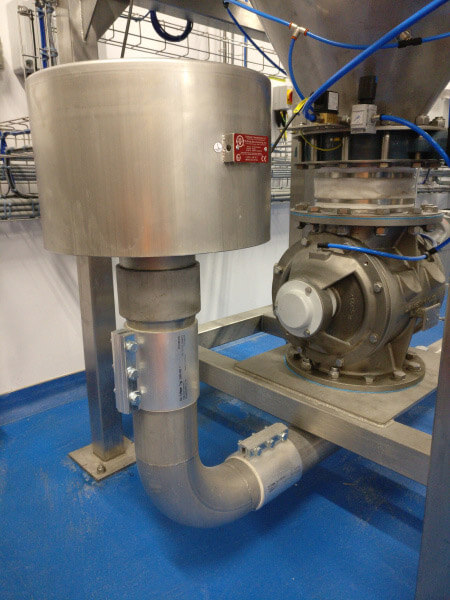
ATEX rated filters help minimize the potential of an explosion in hazardous working environments.
Other governing design codes depend on the process contamination, the surrounding environment, and installation location. This also includes governmental and environmental requirements, such as:
- ATEX for potentially combustible dust and gas.
- Explosion-proof requirements for electrical components (motors, gauges) installed in classified areas.
- Industry specifications such as NFPA 99:2018 Health Care Facilities Code and ISO 7396-1:2016 Medical Gas Pipeline Systems govern medical vacuum systems.
- CE Marking to denote conformity to EU norms.
- REACH and RoHS declarations to confirm hazardous materials are excluded from the manufacturing process.
Filter Housing Materials of Construction
Most industrial air and gas filters are built from steel construction; however, the steel grade and final finish are subject to specific process conditions. For standard air applications, painted carbon steel construction is typically acceptable.
However, when corrosive chemicals or process gases are present or the ambient environment is harsh (marine or chemical environment), then a high grade of stainless steel (316L) may be required.
Specific alternative coatings may be necessary based on the process and ambient environments. Special paint finishes (epoxy, marine) or corrosion-resistant coatings (nickel plating, PTFE coating) are options for harsh and corrosive environments.
The connections and fittings of a filter are also critical components. Some filters may require flanged connections (ANSI, DN, ISO-K) to match the equipment or existing pipework. In high pressure and medium/high vacuum applications, some flanges will require a special finish to ensure an ideal sealing surface. Threaded connections are also common and can be metric (BSPP or BSPT) or US standard (MPT or FPT) depending on the country standards and the process equipment.
Materials of construction are the primary driver of cost, so it is important to understand what is necessary to withstand the process and ambient conditions before finalizing a project budget.
Leak Rate for Vacuum Filter Housings
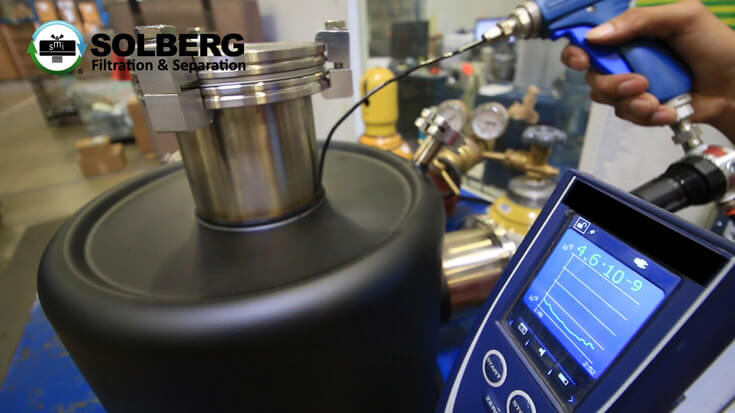
Solberg WL series filter for vacuum service receiving a final helium leak rate certification test.
While a filter is critical for protecting a vacuum pump from process contamination, it must also be leak-tight to ensure that the operator can achieve the required process vacuum level. When selecting a vacuum filter, request a published leak rate (mbar L/sec) from a calibrated helium leak test machine to ensure that it will hold vacuum during service.
Filter elements are constructed from one of many media options depending on the ambient or process contamination and the operating conditions. A variety of micron ratings and efficiencies are available depending on the nature and size of particle contamination. Polyester, paper filter, PTFE, fiberglass, and stainless-steel mesh are all common selections, and micron sizes vary from sub-micron to coarse.
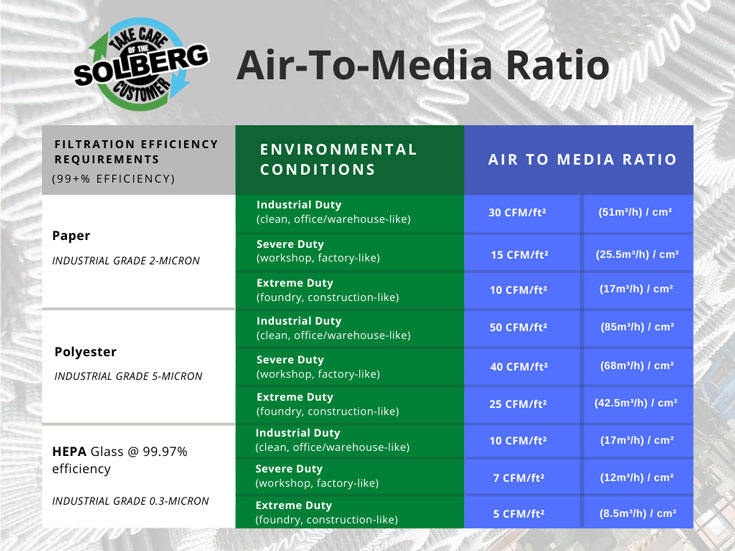
The overall efficiency is a combination of the filter media and velocity, and the holding capacity is driven by element design (surface, depth, wrapped, or pleated). In addition to solid particles, some media are designed for vapor adsorption, which necessitates granulate and impregnated media styles.
Filter Element Construction and Sealing
The process conditions dictate whether special components are necessary. For example, the presence of chemicals, and high temperatures may necessitate special potting compounds to ensure structural integrity. Corrosive environments may necessitate 304 or 316 stainless steel element support components such as end-caps.
Additionally, a filter is only as good as its seal, so gasket material must also be compatible with the process conditions and contamination. Viton, PTFE, and BUNA are three common gasket types used under different conditions.
Filter Safety, Installation, and Maintenance
Safety
Process contaminants may be corrosive, pyrophoric, or explosive by nature, so handling and service by the Operator must be considered in advance. Explosion-resistant designs such as ATEX are an option.
Some dust is pyrophoric and will catch fire when suddenly exposed to oxygen, so additional features such as oxidizing ports are integrated to ensure the captured material is safe for operators to handle during maintenance.
Installation Requirements
Once a filter size and capacity are determined, it is critical to consider the available space for installation and access for service. Whether a new or retrofit installation, there may be limitations driven by piping, overhead clearance, weight, and physical access.
Industrial filters can be designed and manufactured to fit within the available space and limitations of a new system (vacuum pump, blower, or compressor package) or an existing plant. Weight goes hand in hand with size, so confirm that the pipework or mounting location can support the filter in both a clean and dirty state.
The service clearance needed to remove a filter element from the housing and the weight of the filter lid and the element must be understood before installation. Special features such as davit/lifting arms or lateral access doors are good options to simplify the service process and to make it safer for the operator.
Differential Pressure
The restriction across a filter element is defined as the differential pressure, also referred to as pressure drop. The increased pressure drop is a primary factor in the service interval. This interval varies depending on the actual flow rate and the contamination challenge.
Filtration designs must consider the element micron rating, efficiency, and surface area to minimize the differential pressure, which allows for more efficient system performance. If the differential pressure is excessive, the protected equipment will struggle to operate efficiently and achieve the vacuum or pressure required for the process.
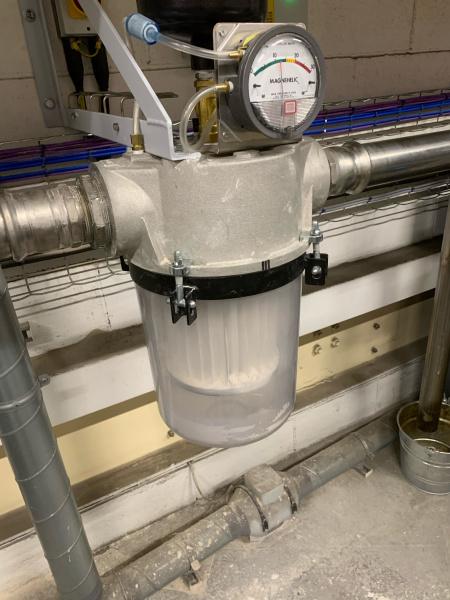
The pressure differential can be measured and monitored via analog or digital gauges, which can be integrated into the filter or within taps included in the upstream and downstream process pipework. This feature allows the operator to monitor the filter condition and ultimately know when the element must be serviced or replaced.
Service/Maintenance Accessories
Industrial filters can be designed with integrated features for convenient service and maintenance: pulse cleaning, removable collection bins, and auto-drain systems are a few of the common items requested by operators/maintenance personnel.
In cases where the captured contaminant is harmless, cleaning a filter element may be as simple as using a brush or compressed air to remove particles. Some filter media is washable, which can also extend the lifespan.
Automated and self-cleaning features are good options if the contaminant is hazardous or if continuous duty is required.
In liquid filters and separation applications, an automated drain system can allow for continuous liquid collection and handling without interrupting the process of vacuum or pressure.
Conclusion
There are a variety of industrial filters designed for specific applications and functions. Additionally, many factors will affect a filter’s effectiveness and efficiency. It is important to take all application parameters and system requirements into consideration when selecting filters to protect industrial equipment.
Solberg Manufacturing is an industry-leading expert on all types of air and gas filters, as well as vapor traps, silencers, and replacement elements. To learn more about our filtration solutions or to place an order, please contact us through our online form, and a Solberg team member will be in touch shortly.